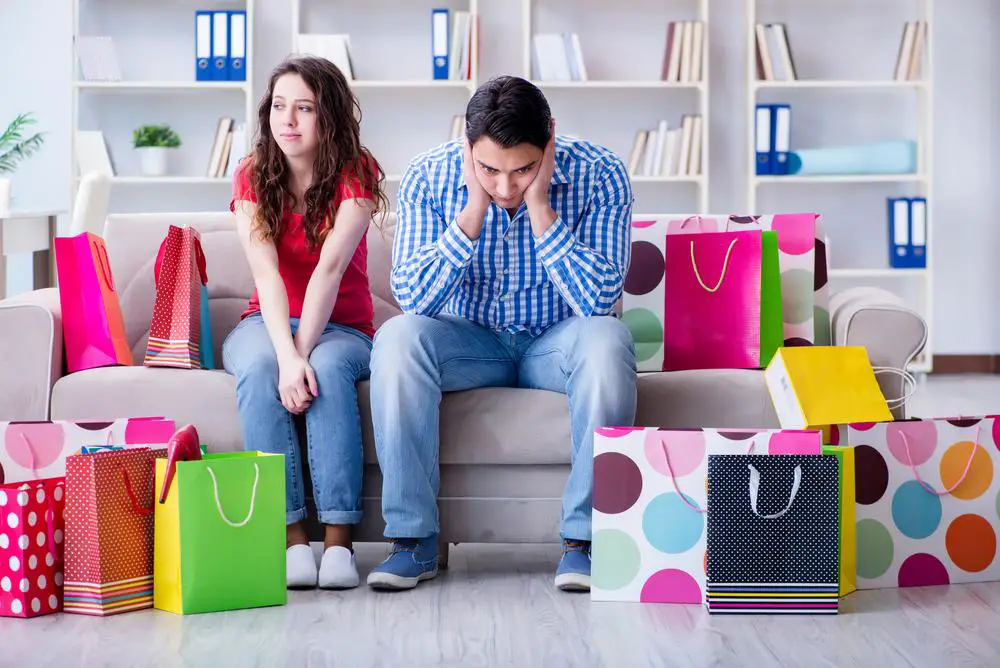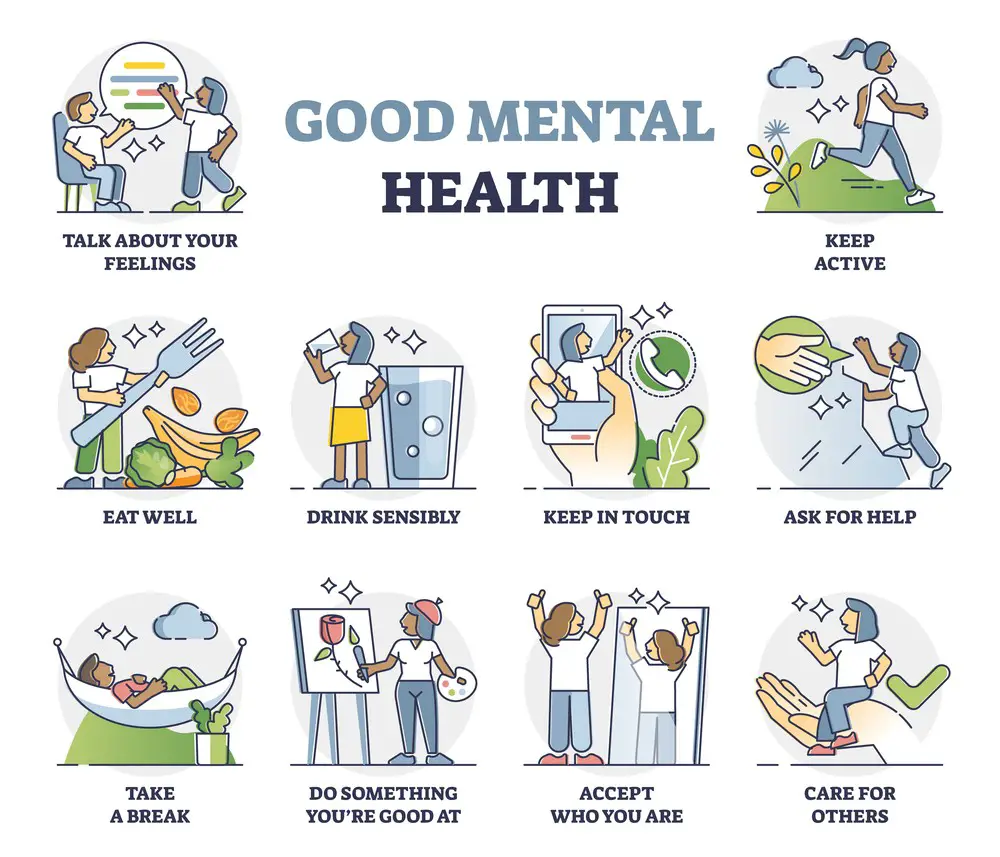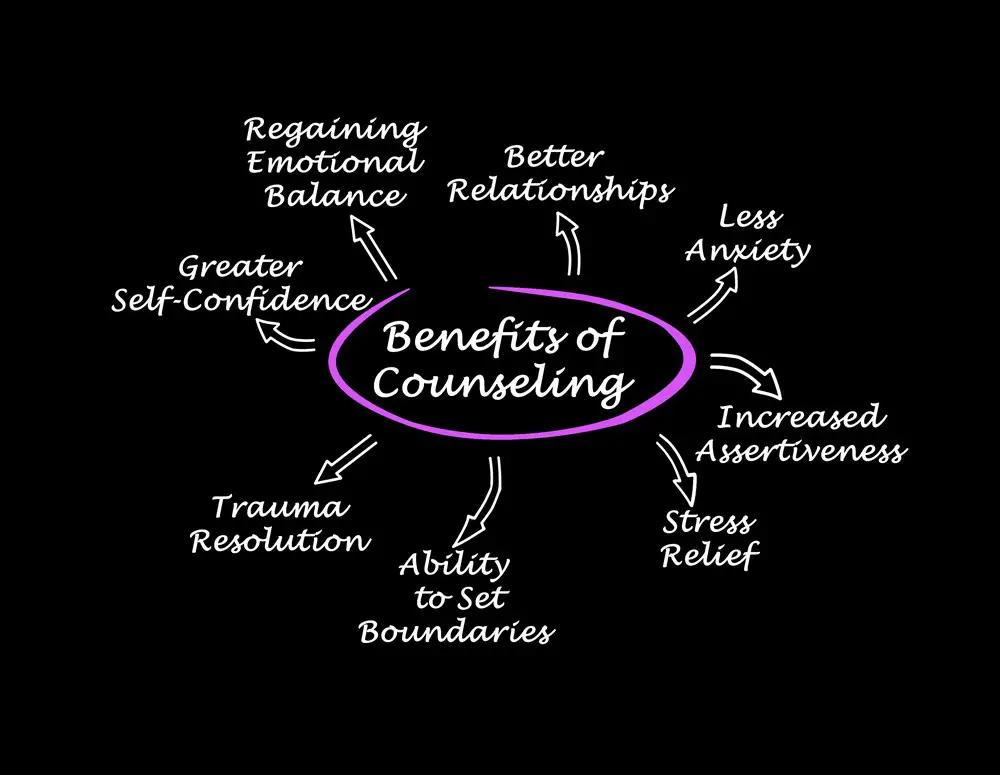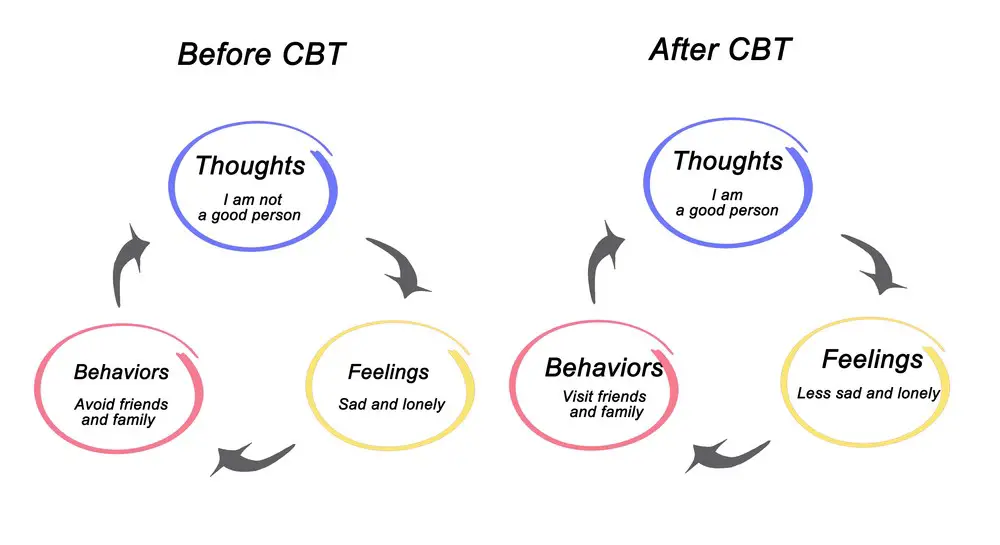Compulsive buying disorder, also known as compulsive shopping or spending, is a behavioral addiction characterized by the irresistible urge to buy goods and services, often leading to distress and financial difficulties. It is essential to recognize the signs and symptoms of this disorder to seek appropriate treatment and manage its negative impact on one’s life.
Understanding compulsive buying disorder involves examining its connection with impulse control, self-esteem, and emotional regulation. It is crucial to acknowledge the demographics and onset of the disorder, its co-occurrence with other disorders, and its relation to internet use. By taking a comprehensive approach to assessing and treating this addiction, individuals can regain control of their lives and finances.
Key Takeaways
- Compulsive buying disorder is a behavioral addiction that can lead to distress and financial difficulties.
- Recognizing the signs and symptoms is essential for seeking appropriate treatment.
- Addressing impulse control, self-esteem, and emotional regulation is crucial in managing compulsive buying behavior.

Understanding Compulsive Buying Disorder
Compulsive buying disorder, also known as oniomania, is a behavioral issue where you have an uncontrollable urge to shop and spend money, often on items you don’t need. It can hurt your financial, emotional, and social well-being. So, it’s crucial to understand the factors that influence compulsive buying behavior.
One factor to consider in compulsive buying is the role of neurotransmitters such as dopamine and serotonin. These chemicals in your brain play a significant role in regulating mood and reward, and they can contribute to the irresistible urge to shop. When you buy something, your brain releases dopamine, giving you a pleasurable “high.” Serotonin, on the other hand, helps to regulate mood, and low serotonin levelscan lead to impulsive behavior.
Here’s a brief overview of how these neurotransmitters play a part:
- Dopamine: Your brain releases dopamine when you engage in pleasurable activities, like shopping. This creates a strong reward sensation, making the behavior addictive.
- Serotonin: Low serotonin levels can cause impulsive behaviors like compulsive shopping. Some people might try to self-regulate their mood by shopping to feel better, leading to a continuous cycle.
Compulsive buying disorder can also have devastating effects on your relationships. Friends and family might not understand your compulsive behaviors, and they may feel frustrated or neglected. Additionally, the financial strain caused by excessive spending can lead to conflicts and arguments with loved ones.
To tackle compulsive buying disorder, it’s essential to recognize your triggers and develop strategies to cope with them, such as:
- Identifying situations or emotions that lead to the urge to shop, like stress, boredom, or sadness.
- Creating a solid budget and keeping track of your spending.
- Learning alternative ways to deal with your emotions, such as practicing mindfulness or engaging in hobbies and activities that bring you joy.
Remember, understanding compulsive buying disorder and addressing its root causes is the first step in taking control of your buying behavior and improving your overall well-being.
 Symptoms of Compulsive Buying Disorder
Symptoms of Compulsive Buying Disorder
Compulsive buying disorder (CBD) can affect anyone, leading them into a destructive cycle of excessive shopping. Recognizing the symptoms is crucial to identifying this issue and seeking help. Here are some common symptoms of CBD:
- Difficulty resisting purchases: You constantly resist buying unneeded items, even if they bring financial difficulties.
- Mood regulation: You often use shopping to experience a “high” or reduce tension and boredom, essentially turning shopping into a coping mechanism.
- Preoccupation: You may find yourself constantly thinking about shopping for unneeded items, spending a significant amount of time researching coveted items, and planning your next shopping spree.
- Concealment: It is common for those with CBD to hide their purchases or maintain an image of success and wealth despite the disorder’s consequences.
- Relationship problems: Uncontrolled shopping may result in arguments with family members or loved ones, who may have concerns about your spending habits.
- Financial stress: Your compulsion to shop may lead to substantial debt, which can strain your budget and create additional problems.
- Experiencing mania or depression: As CBD affects your mental health, you may experience episodes of mania, in which you feel overly energetic and joyful, or depression, which brings extreme sadness and low energy levels.
It’s important to acknowledge these symptoms and seek professional help if you suspect you may be suffering from compulsive buying disorder. Remember, you don’t have to face this alone, and resources are available to help you regain control over your shopping habits and finances.
Demographics and Onset
When it comes to compulsive buying disorder (CBD), various demographics and onset patterns are observed. Let’s go through some critical aspects related to demographics and onset in a few short paragraphs.
CBD is observed worldwide, with estimates ranging from 6-7% of the global population being affected by this disorder. As you go through the demographics of people with CBD, you’ll notice that women are often more commonly affected by this condition. However, it’s crucial to remember that men can also suffer from compulsive buying disorder.
The onset of CBD can vary, with some cases starting in late teens. It’s not unusual for people with CBD to experience the emergence of symptoms during their adolescence or early adulthood. Nevertheless, some cases may begin later in life, depending on the individual’s circumstances and environmental factors.
In summary, recognizing the demographics and onset of compulsive buying disorder can help you grasp its impact better. Keep in mind that CBD affects a considerable number of people, including both women and men, with the onset varying between late teens and later in life.

Impulse Control and Behavioral Addiction
Sometimes, your shopping habits might go beyond the usual retail therapy. When it becomes an uncontrollable urge to buy, it’s essential to understand the connection between impulse control and behavioral addiction.
Impulse control disorders (ICDs) are a group of conditions where an individual struggles to resist the urge to perform certain harmful behaviors. This could include excessive shopping, also known as compulsive buying disorder. You might notice it affecting various aspects of your life, such as financial, social, and psychological well-being.
Behavioral addictions share similarities with impulse control disorders, as they both involve repeated, maladaptive behaviors. These addictions can manifest in activities such as gambling, internet use, or, in this case, shopping. Recognizing and acknowledging the signs of compulsive buying can be vital in determining the right action to combat this issue.
Here are some common traits of impulse control and behavioral addictions:
- Struggling to resist engaging in the problematic behavior.
- Experiencing negative emotions before performing the behavior, such as anxiety or stress.
- Feeling pleasure or relief after engaging in the behavior.
- Repeatedly engaging in the behavior despite severe consequences.
To sum up, impulse control and behavioral addictions are critical aspects to consider when identifying and addressing compulsive buying disorders. It’s essential to recognize the signs and the consequences, as this can be the first step towards seeking effective treatment and support. Remember, reaching out for help is always encouraged, and there’s no shame in admitting that you’re struggling with this challenging condition.
Co-occurrence with Other Disorders
Compulsive buying disorder (CBD) often coexists with other mental health conditions, making it essential to consider these factors when exploring treatment options. Let’s look at some common disorders that tend to co-occur with CBD.
Anxiety and Mood Disorders: Your compulsive buying can be triggered by stress or anxiety, leading to an increased risk of developing anxiety disorders. Similarly, mood disorders like depression might drive you to seek comfort in purchasing items, creating a cycle that worsens both conditions.
Personality Disorders: Certain personality disorders, such as borderline personality disorder or narcissistic personality disorder, might make you more susceptible to CBD. Recognizing these disorders’ symptoms can help you better understand the factors contributing to compulsive buying habits.
Substance Use Disorders: People who struggle with substance abuse often display impulse control issues, increasing the likelihood of developing CBD. It is essential to address both the substance use and CBD to achieve a successful recovery.
Obsessive-Compulsive Disorder (OCD): As CBD shares some characteristics with OCD, it’s not uncommon for the two disorders to coexist. About 1%-2% of the population is estimated to have OCD, which often overlaps with other psychiatric conditions.
Eating Disorders: Compulsive buying can be a coping mechanism for distress related to eating disorders. Identifying this connection can help you address both disorders simultaneously and pave the way for a more holistic recovery.
Gambling disorder: CBD and gambling disorders have been found to co-occur, with a prevalence rate of 0.75% for both disorders. If you struggle with compulsive shopping and gambling problems, it is crucial to tackling both together for the best chance at recovery.
Bipolar Disorder: Spending sprees during manic episodes are characteristic of bipolar disorder, which can make it challenging to tease apart CBD from the symptoms of this condition. Working with a mental health professional can provide clarity and help you build a targeted treatment plan accordingly.
Remember that understanding the connections between compulsive buying and other disorders is a crucial step toward recovery. Addressing these co-occurring conditions will empower you to build healthier habits and improve your overall well-being.
Role of Self-esteem and Emotions
Compulsive buying disorder can significantly impact your self-esteem and emotions. Understanding the relationship between these factors can help in tackling the disorder appropriately.
Low self-esteem: People with compulsive buying disorder often suffer from low self-esteem. They may rely on purchasing items to validate themselves or seek approval from others 1. Dealing with feelings of inadequacy might lead to excessive and repetitive buying behaviors. It’s essential to recognize the role that low self-esteem plays in driving compulsive shopping and address it to foster healthier habits.
Guilt and shame: Compulsive buying is also closely linked to negative emotions such as guilt and shame. After making impulsive purchases, you might experience guilt for overspending or shame for being unable to control your spending habits. These emotions can fuel a vicious cycle, urging you to continue buying as a temporary relief from distress 2. To break free from this cycle, it’s vital to acknowledge and process the guilt and shame instead of suppressing them.
Emotional consumption: Another driving force behind compulsive buying is the need to cope with unpleasant emotions 3. This could stem from insecurities about your identity or negative self-evaluations. Turning to material objects to soothe emotional pain may provide short-term relief but can lead to long-term financial and psychological problems. Developing healthier coping strategies and addressing the root cause of emotional discomfort is essential for overcoming compulsive buying.
Remember, tackling compulsive buying disorder begins with understanding the impact of self-esteem and emotions on your buying habits. By addressing these underlying factors, you can pave the way for lasting change.
Financial Impact
Living with a shopping addiction can significantly impact your financial well-being. Uncontrolled shopping sprees can lead to mounting debt and financial difficulties, making it incredibly challenging to recover. In this section, we’ll discuss the various aspects of the financial impact of compulsive buying disorder.
Excessive shopping can quickly rack up credit card charges, as you might find yourself impulsively purchasing items that you don’t need. This reliance on credit cards can create a dangerous cycle of debt, as interest rates and minimum payments compound over time. It’s essential to be mindful of your spending habits, especially when using credit.
Moreover, resisting the urge to shop further depletes your cash reserves. Cash is a crucial financial safety net, as it helps you cover unexpected expenses and emergencies. When shopping addiction consumes your available cash, you can find yourself in precarious situations with limited resources to fall back on.
Here are some key points to remember about the financial impact of compulsive buying disorder:
- Shopping addiction can lead to credit card debt and financial difficulties.
- Excessive spending on unneeded items reduces your available cash.
- It’s essential to be mindful of your spending habits, especially when using credit.
Facing these financial challenges can have long-lasting consequences, both for your finances and your overall well-being. It’s essential to recognize the signs of compulsive buying disorder and seek help if you struggle to manage your shopping habits. By addressing the issue, you can start working towards a healthier relationship with money and shopping. Remember, taking the first step is key to overcoming any addiction.

Treatment Approaches
When dealing with compulsive buying disorder, various treatment strategies can be employed to help you regain control over your shopping behaviors. Let’s explore some common approaches:

Cognitive Behavioral Therapy (CBT): CBT is a popular psychotherapy technique that focuses on identifying and changing negative thought patterns and behaviors. Through this method, you’ll address the triggers and reasons behind your compulsion to shop, and work on developing healthier coping mechanisms.
Group Psychotherapy: Group therapy can be an effective option for addressing compulsive buying disorder, as it provides a supportive environment where you can share your experiences and learn from others who face similar challenges. Peer encouragement and accountability can be powerful motivators in overcoming compulsive shopping habits.
Cognitive-Behavioral Group Therapy: This approach combines the strengths of CBT and group therapy, allowing you to gain the practical tools and social support needed to tackle your compulsive buying issues. By working through specific exercises and strategies with others, you’ll build a strong foundation for lasting change.
Pharmacotherapy: In some cases, medication may be prescribed to help manage the symptoms associated with compulsive buying disorder. Antidepressants or anti-anxiety medications can potentially reduce the urge to shop and improve overall mood. However, it’s crucial to consult with a healthcare professional to determine if this option is suitable for your specific situation.
When choosing a treatment approach, consider your personal preferences and needs and consult a mental health professional for guidance. Remember, overcoming compulsive buying disorder may require time and patience, but with the proper support and resources, you can regain control and create a healthier relationship with shopping.
Medications Used in Treatment
When it comes to treating compulsive buying disorder, several medications come to your rescue. It’s essential to understand which ones might work best for your condition, so let’s dive into it.
SSRIs (Selective Serotonin Reuptake Inhibitors) are a common choice for treating compulsive buying disorder. They help your brain maintain a healthy level of serotonin, which can improve your mood and reduce impulses. Common SSRIs include fluoxetine (Prozac) and sertraline (Zoloft). Remember that SSRIs might take a few weeks to show their full effect.
Naltrexone is another medication that could be useful in treating this disorder. It’s initially used to treat opioid addiction but has shown promise in curbing compulsive buying urges. Naltrexone blocks the rewarding effects of shopping, making it less appealing for you.
Memantine has also been explored for its potential benefits. It’s primarily used for treating Alzheimer’s disease but has shown some effectiveness in reducing compulsive shopping behaviors. Memantine helps regulate glutamate activity in your brain, balancing mood and reducing impulsivity.
Fluvoxamine is another SSRI that may specifically benefit those with compulsive buying disorder. Research suggests it might be particularly helpful for individuals struggling with obsessive shopping-related thoughts.
Remember, these medications might have side effects, and it’s crucial to work closely with your healthcare provider to find the best-fit treatment for your specific needs. They’ll help you weigh the pros and cons and adjust dosages to ensure optimal results. With their support, you’ll be on the path to overcoming compulsive buying disorder and regaining control over your life.
Compulsive Buying Behavior and Internet Use
With the rise of online shopping and e-commerce, it’s no wonder that compulsive buying behaviors have entered the digital realm. You may spend hours browsing online stores, making purchases without much thought, and experiencing a sense of euphoria when clicking the “checkout” button. The convenience of shopping on the Internet can be a double-edged sword, leading to potential Internet addiction and negative consequences for your mental health and finances.
The internet has made it easy to shop impulsively, access tempting deals, and engage in retail therapy whenever you feel stressed or down. While it can be satisfying and enjoyable at times, it’s essential to recognize the signs of compulsive buying behavior, especially when it comes to online shopping:
- Constantly browsing online stores, even when you don’t need anything
- Making frequent purchases despite mounting financial concerns
- Feeling a sense of guilt or shame after making an online purchase
- Hiding your online shopping activities from friends and family
- Experiencing a decrease in daily functioning due to time spent shopping on the internet
To mitigate the effects of compulsive online shopping and maintain a healthy balance, try implementing the following strategies:
- Budgeting: Set a monthly limit for your online shopping expenses and stick to it. Monitor your spending to avoid going over this limit.
- Unsubscribe from promotional emails: This will help reduce the temptation to buy items on sale impulsively or in limited supply.
- Mindful shopping: Before making a purchase, take a moment to consider if you need the item and whether it fits within your budget.
- Set time limits: Allocate a specific amount of time for online shopping and aim to stay within those boundaries.
- Seek support: If you find it challenging to control your online shopping habits, consider seeking guidance from friends, family, or a mental health professional.
Remember, it’s natural to enjoy shopping occasionally, but it’s crucial to maintain a healthy balance and keep your spending under control. Stay alert for signs of compulsive online shopping, and don’t be afraid to seek help if necessary. With diligence, you can maintain responsible internet use and avoid the pitfalls of compulsive buying behavior.
Anticipation and Cravings
As you learn more about compulsive buying disorder (CBD), it’s essential to understand the role of anticipation and cravings. These feelings can be quite intense and often lead to impulsive, uncontrolled purchases. So, let’s dive into these emotions and how they impact your buying behavior.
Anticipation, at its core, is the expectation of a positive outcome – in the context of CBD, it’s the excitement and eagerness related to shopping. You might daydream about your next shopping spree, unable to focus on other activities. This heightened anticipation can trigger a strong desire to shop, resulting in compulsive buying behavior.
Cravings are closely linked to anticipation. They manifest as intrusive thoughts and urges to buy, even when you don’t necessarily need them. Your cravings might lead to an irresistible desire to shop, contributing to poor control over your spending decisions.
Many people with CBD experience euphoria while shopping, which only feeds their cravings. The emotional high can be so intense that it masks the negative consequences of excessive spending. This temporary bliss is appealing and often becomes the driving force for compulsive buying.
To manage anticipation and cravings, consider the following tips:
- Recognize your triggers. Be aware of situations that provoke your shopping urges and devise strategies to cope with them.
- Distract yourself. When cravings strike, engage in a different activity that brings you joy or relaxation.
- Set limits. Establish budget constraints and follow them strictly to minimize impulsive buying.
- Seek support. Share your struggles with a trusted friend or join a support group to help you navigate this journey.
Remember, you have the power to take control of your shopping habits. By understanding the role of anticipation and cravings, you can make better choices and overcome compulsive buying disorders. Stay focused, stay strong, and take it one step at a time.
Compulsive Buying Disorder Test Questions
Do you often feel driven to shop?
It’s natural to enjoy shopping from time to time. However, if you find yourself frequently driven to shop, even when you don’t need anything, it may be a sign of compulsive buying disorder (CBD). Be honest about how often you feel compelled to shop and whether it’s having any negative consequences on your life.
Do you experience guilt or regret after shopping?
Feeling guilt or regret after shopping is typical with CBD. If you consistently experience these emotions after making purchases, it could indicate a problem. Try reflecting on your feelings after shopping to gain insight into your shopping habits and emotional well-being.
Does shopping interfere with your daily life?
If shopping regularly gets in the way of your daily life – for example, if it causes you to neglect work, family, or social obligations – this could indicate CBD. It’s essential to evaluate how shopping affects your life outside of the store.
Do you use shopping to cope with emotions?
Using shopping as a coping mechanism for stress, sadness, or other emotions is a common characteristic of CBD. Pay attention to the triggers that lead you to shop and consider seeking healthier ways to cope with your emotions if this is the case for you.
Have you tried and failed to control your shopping habits?
Attempts to cut back on shopping or set limits, only to fail repeatedly, may indicate compulsive buying disorder. This lack of control could also contribute to feelings of guilt or regret, as mentioned earlier. Keep track of your efforts and progress in controlling your shopping habits.
Do you spend more time shopping than you initially planned?
Spending more time shopping than you intended could indicate a problem with CBD as well. If you frequently lose track of time while shopping and can’t seem to stick to a time limit, it might be time to evaluate the underlying reasons why.
Remember, it’s essential to reflect on your shopping habits and emotions honestly to establish whether any concerning patterns emerge. If you’re worried about compulsive buying disorder, seeking professional help can be a valuable first step in addressing these issues.
 Self-Assessment: Do You Need Professional Help?
Self-Assessment: Do You Need Professional Help?
It’s crucial to remember that self-assessment can never replace professional diagnosis. However, reflecting on your shopping habits can be a stepping stone towards understanding whether you need to seek professional help for Compulsive Buying Disorder (CBD). Here’s a simple test to gauge your tendencies. Respond honestly:
Your Shopping Behavior
- Frequency:
- How often do you shop for items that are not necessities?
- Do you find it difficult to resist a good sale, even if you don’t need anything?
- Emotions:
- Do you often shop to improve your mood?
- Does the thought of shopping excite you excessively?
- Impact on Finances:
- Have you faced financial issues due to your shopping habits?
- Are you hiding purchases or the cost of purchases from loved ones?
- Control:
- Have you tried to cut down on shopping without success?
- Do you often buy things impulsively, without considering the necessity or consequences?
- Consequences:
- Have you experienced distress or impairment in social, occupational, or other important areas of functioning due to your shopping?
- Do people around you express concern about your shopping habits?
Reflecting on Your Responses
Take a moment to reflect on your responses. A ‘yes’ to multiple questions, especially in the Control and Consequences sections, might indicate a deeper issue. Here are some steps you could consider:
- Seek Professional Help:
- If your shopping habits are causing distress or impairment in your life, it’s wise to consult a mental health professional who can provide a proper diagnosis and suggest a treatment plan.
- Join a Support Group:
- Engaging with others who face similar challenges can provide valuable insights and support.
- Educate Yourself:
- Learn more about Compulsive Buying Disorder, its symptoms, and its treatment. Knowledge is empowering.
- Practice Mindfulness and Stress-Reduction Techniques:
- Mindfulness meditation, yoga, and other stress-reduction techniques can be beneficial in managing the impulses associated with CBD.
Remember, self-assessment is just a starting point. It’s the insights from a trained professional that will provide the clarity and assistance you need to tackle Compulsive Buying Disorder.
About Jacob Maslow
After surviving the traumatizing events of 9/11, I took it upon myself to heal through helping others. I’m the primary caregiver of my children and understand from first-hand experience the lonely paths you have to walk as a partner and parent when leaving an unhealthy relationship.
We’re all echoing in a dark space that doesn’t have to be this empty, and that’s been my mission since finding solace and recovery in therapy: To help comfort others who are still in shock and at the prime of their struggle.
I came across BetterHelp after searching for this type of community. I wanted to belong to a body of proactive therapists and supportive therapy veterans that allowed me to see other sides of the story.
It was unconventional, and that’s what attracted me most. During my most challenging times, when my ex-wife completely cut me off from my children, I found comfort and clarity through BetterHelp.
Instead of being chained to a strict therapist recommendation, I was in charge of who I felt understood my struggle most. That allowed me to find my true peace, as I was reunited with those who read behind my words and had first-hand experience with my trauma.
Recovery is a choice; with BetterHelp, that choice will be a few clicks away. You can join their couples-oriented platform, Regain.us, for those stuck with family estrangement and toxic relationship patterns.
- The Burnout Epidemic: Why We’re All Feeling Overwhelmed and How to Cope - February 9, 2024
- How to Live a Peaceful Life - February 9, 2024
- Useful Information You Should Know About Health Screenings - February 8, 2024
This site contains affiliate links to products. We will receive a commission for purchases made through these links.


 Symptoms of Compulsive Buying Disorder
Symptoms of Compulsive Buying Disorder Self-Assessment: Do You Need Professional Help?
Self-Assessment: Do You Need Professional Help?

